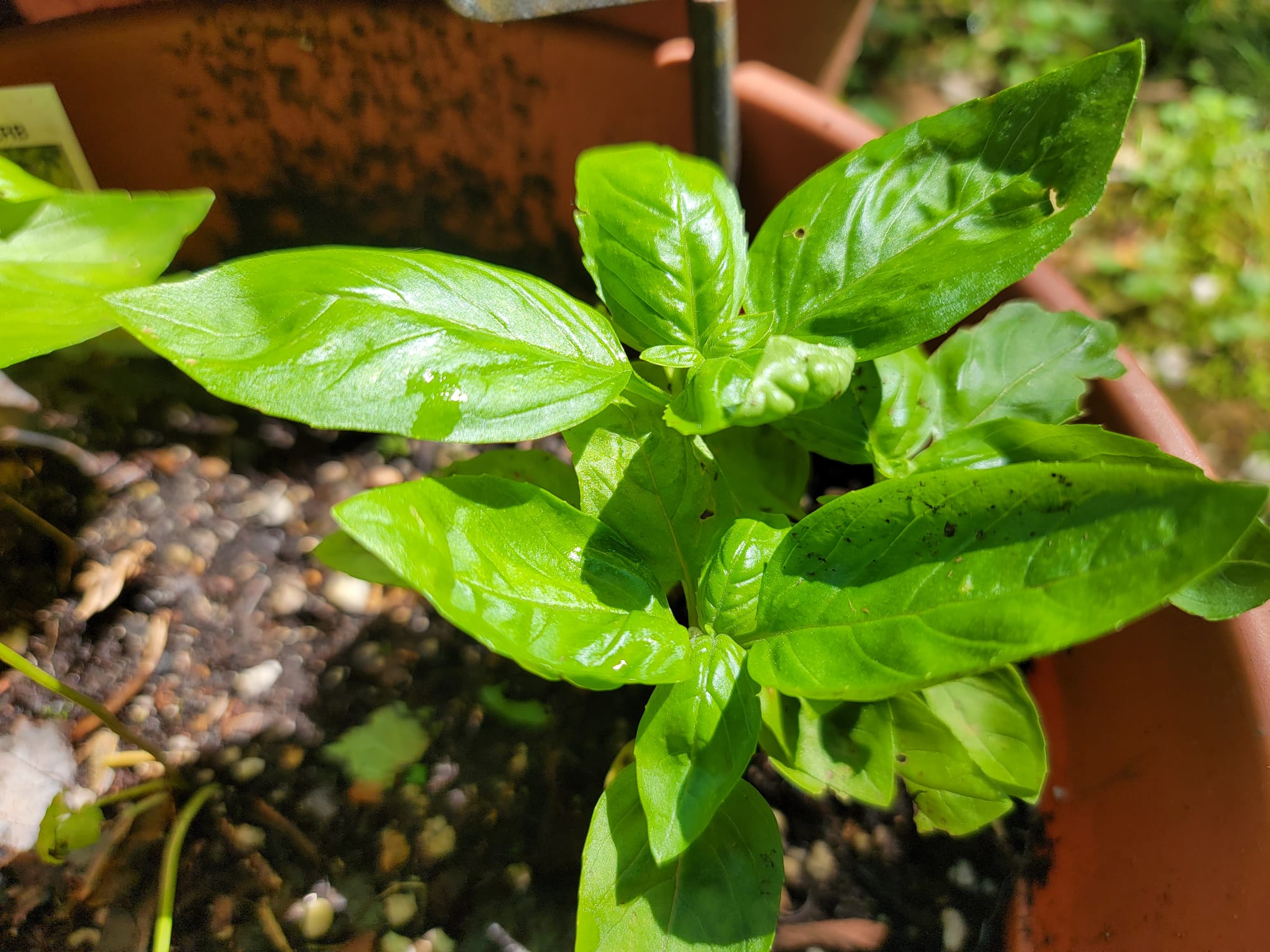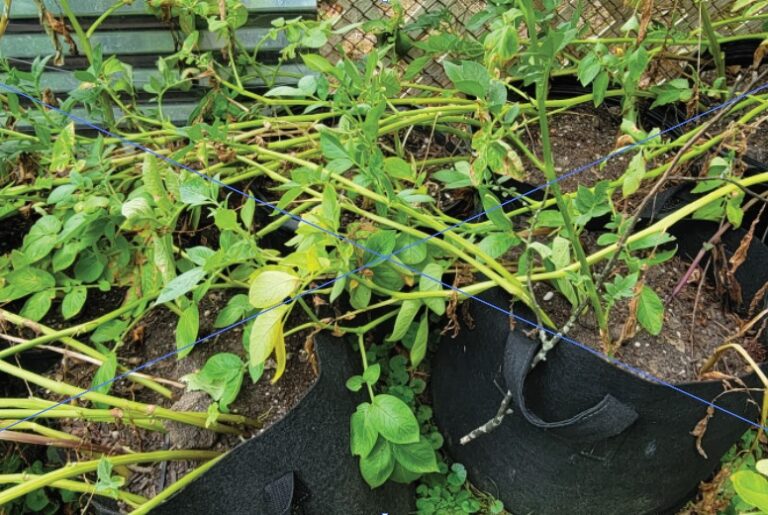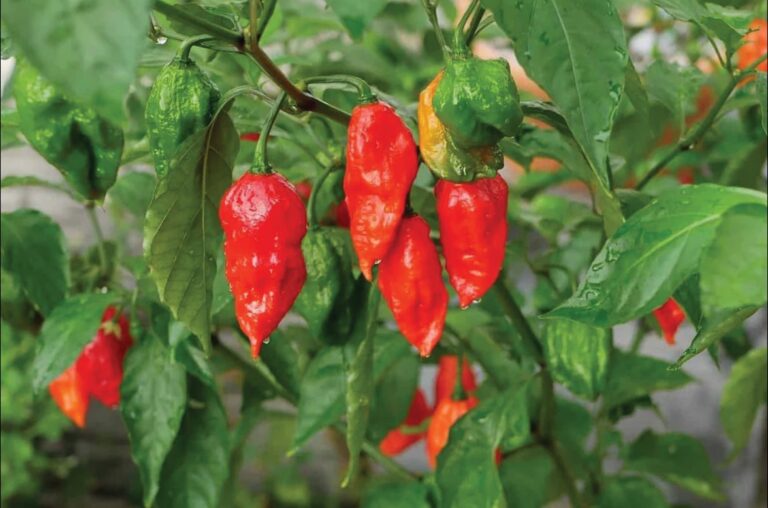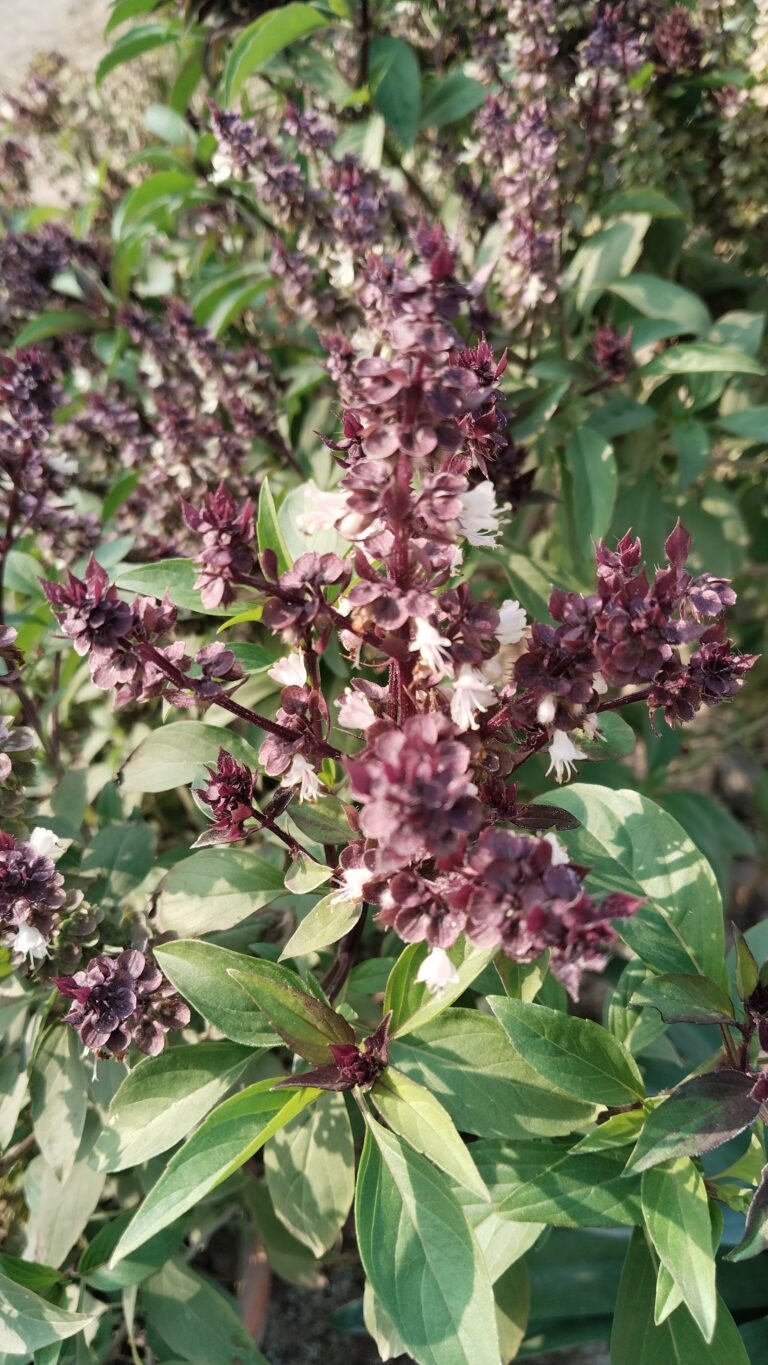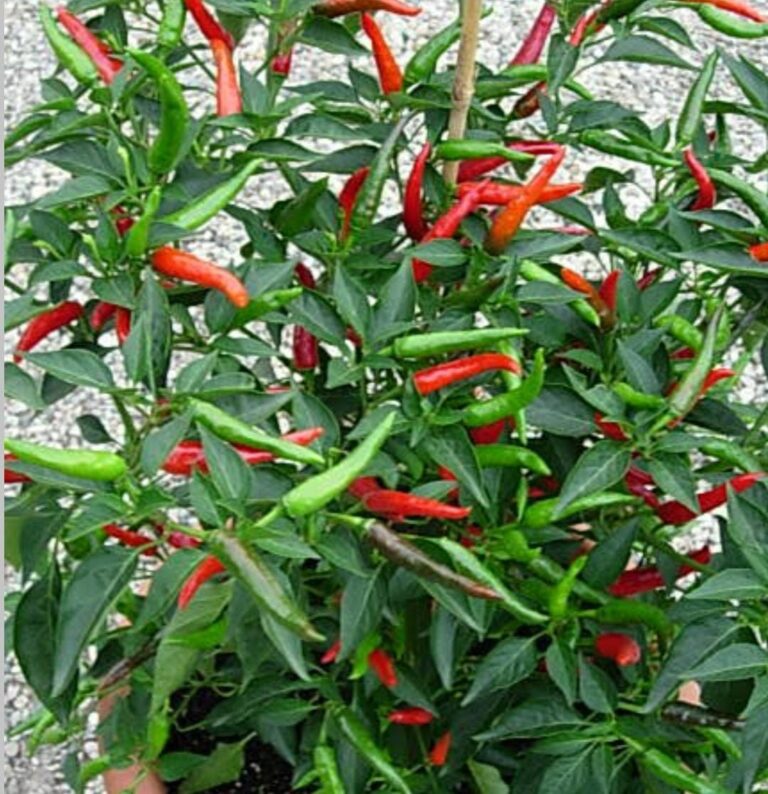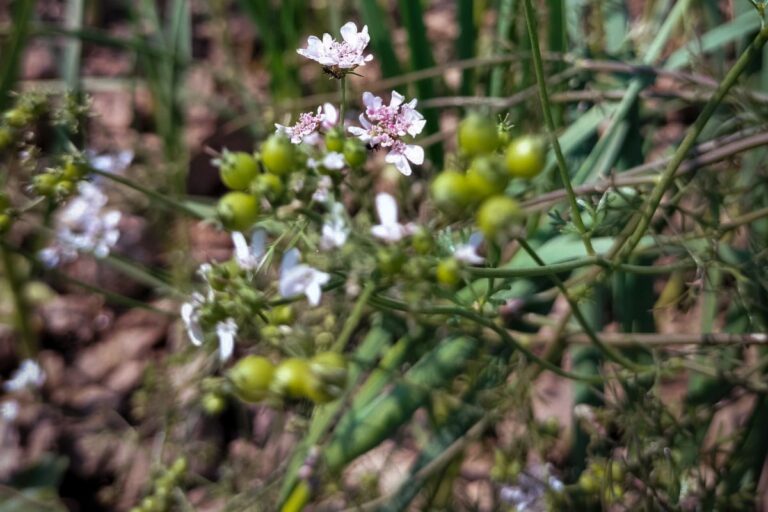Sweet Basil: An Exclusive 5,000-Year-Old Herb
Introduction
Sweet basil (Ocimum basilicum), a popular plant in kitchens and gardens around the globe, has long been praised for its sweet fragrance, culinary versatility, and therapeutic properties. Basil, a member of the Lamiaceae (mint) family, has become a popular ingredient in many cuisines, particularly Mediterranean and South Asian recipes, due to its distinct aroma and chemical composition. Previously, we shed light on a few known types of basil. Now, in this blog, we will discuss the scientific, horticultural, nutritional, and medicinal aspects of sweet basil, shedding light on its complex biology and practical applications. Let’s have a look!
Botanical Description
Sweet basil is a herbaceous annual that can act as a short-lived perennial in tropical conditions. It belongs to the Ocimum genus, which has over 60 species, many of which are aromatic and grown for culinary or ornamental uses. The scientific classification goes as follows:
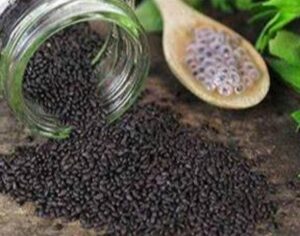
Kingdom: Plantae
Order: Lamiales
Family: Lamiaceae
Genus: Ocimum
Species: Ocimum basilicum
Basil plants typically grow to a height of 12 to 35 inches. They have opposite leaves with ovate to lanceolate shapes and slightly toothed margins. The leaves are bright green and silky, and when crushed, they have a pungent perfume due to the presence of volatile oils. The plant produces small, white to purple flowers placed in terminal racemes, which are pollinated mostly by bees.
Origin and Domestication
Botanists disagree on the actual origin of sweet basil, but it is usually thought to have originated in tropical regions of Central Africa and Southeast Asia. According to historical sources, it was cultivated in the Subcontinent over 5,000 years ago and was revered not just for its flavor but also for its religious and medical properties. Basil originated in Southeast Asia and spread through trade routes to the Middle East, the Mediterranean region, and, eventually, Europe and America.
Basil was introduced to ancient Greece and Rome, where it became connected with both good and bad tales. In medieval Europe, it was supposed to be associated with scorpions or madness, but in other contexts, it represented love and fertility. This intricate cultural history highlights Basil’s long-standing global significance.
Phytochemical Profile
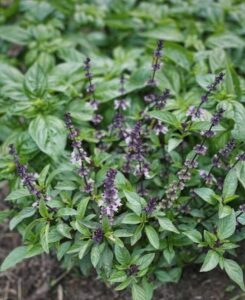
Sweet basil’s distinct aroma and flavor are due to a high concentration of essential oils and secondary metabolites. The main volatile chemicals discovered in O. basilicum are:
- Linalool gives off a floral, pleasant aroma and has antibacterial and anti-inflammatory properties
- Methyl chavicol (estragole) produces a spicy, anise-like fragrance
- Eugenol, which is found in clove oil, adds a warm, spicy aroma while also having analgesic qualities
- Cineole (1,8-cineole): Has eucalyptus-like fragrance and expectorant properties
The main volatile chemicals determine the unique chemotype, which changes depending on cultivar, geographic region, soil chemistry, and environmental conditions. Beyond essential oils, basil contains flavonoids, polyphenols, and tannins, all of which contribute to its antioxidant ability.
Cultivation and Agronomy
Basil grows best in warm, temperate areas and prefers full sun and well-drained, fertile soil with a pH of 6.0 to 7.5. It is susceptible to cold temperatures and frost, so it is best suited for summer planting in temperate climates or year-round cultivation in tropical areas.
Seeds are the most frequent method of propagation; however, stem cuttings root readily in moist conditions. Seeds normally germinate in 5 to 10 days at ideal temperatures ranging from 68°F to 77°F (20°-25°C).
Cultural practices encompass:
- Thinning and spacing: Space plants 5 to 10 inches apart to allow for ventilation and light penetration
- Irrigation: Regular but moderate watering is required, as overwatering can encourage root rot and fungal diseases
- Pinching: Removing apical buds promotes lateral branching and slows bolting, extending the vegetative harvest season
Sweet basil is susceptible to aphids, whiteflies, and fungal infections such as downy mildew (Peronospora belbahrii). Biological controls and crop rotation are two common integrated pest management (IPM) tactics used to protect plant health.
Harvesting and Post-Harvest Handling
Harvesting begins when the plant reaches a height of around 6-8 inches and has an abundance of leaves. Cutting should occur above the second set of true leaves to promote regeneration. Harvesting is frequently done in the morning before the sun evaporates volatile chemicals, for the best flavor and oil concentration.
Post-harvest management entails gentle washing and drying, followed by fresh selling or preservation. Common preservation techniques include:
- Air drying: This method is advantageous for long-term storage, as it effectively preserves the overall quality of the product. However, it’s important to note that some volatile oils may dissipate over time, leading to a potential loss of fragrance and flavor intensity.
- Freezing: The process retains the majority of the original flavor and aroma, ensuring that the delightful essence of the ingredients is largely preserved.
- Oil infusion: It serves a dual role in both the culinary and medicinal fields, being utilized not only to enhance flavors in various dishes but also to promote health and treat a range of ailments. In cooking, this ingredient can add depth and complexity to meals, while in herbal medicine, it is valued for its therapeutic properties and ability to support overall wellness.
- Essential oils: Essential oils of sweet basil are obtained through a process known as steam distillation, which involves the extraction of volatile compounds from plant materials. These aromatic substances are then widely utilized in various applications, including aromatherapy, where they are used to promote relaxation and enhance emotional well-being. Additionally, essential oils play a significant role in the perfume industry, contributing unique fragrances to various products. They are also incorporated into cosmetics, where they can offer beneficial properties for skin care and beauty formulations.
Culinary Applications

Sweet basil, like many other herbs, is a staple of Italian and Thai cuisine, appearing in pesto, caprese salads, tomato sauces, and curries. The leaves are usually used fresh to preserve their delicate flavor, as prolonged heating might damage aromatic components.
In classic culinary applications, basil is combined with tomatoes, garlic, olive oil, and cheese. It is also used to infuse vinegars, oils, and drinks. The seeds, while less typically used in Western cuisines, are popular in Indian and Southeast Asian desserts and drinks, where they form a mucilaginous coating when soaked in water.
Nutritional Composition
Although basil is used in modest quantities, it contains several vital elements. Sweet basil gives the following per 100 grams of fresh leaves:
Energy: 22 kcal.
Carbohydrate: 0.095 oz
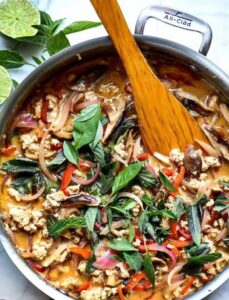
Protein: .11oz
Fat: 0.02 oz
Fiber: 0.056
Vitamin A (RAE) is 264 μg (33% DV).
Vitamin K: 414.8 μg (345% of the daily value).
Vitamin C: 18 mg (20% DV).
Calcium: 177 mg (18% DV).
Iron: 3.2 mg (18%DV)
Basil’s high vitamin K concentration helps with blood clotting and bone metabolism. Polyphenolic antioxidants also help to protect cells from oxidative damage.
Pharmacological and Medicinal Properties
Sweet basil is of scientific interest not only for its culinary purposes, but also for its pharmacology. Numerous studies have looked at the bioactive properties of its essential oils and extracts.
1. Antimicrobial Activity of Sweet Basil
Basil essential oil has broad-spectrum antibacterial activity against bacteria, yeasts, and molds. Linalool and eugenol are especially efficient against Gram-positive bacteria such as Staphylococcus aureus and Bacillus subtilis, as well as Gram-negative bacteria like Escherichia coli.
2. Antioxidant Potential
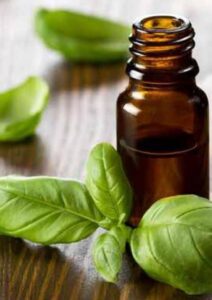
Sweet basil contains flavonoids and phenolic acids, such as rosmarinic acid and caffeic acid, which have strong antioxidant properties. These chemicals scavenge free radicals and chelate metal ions, which helps to avoid chronic diseases caused by oxidative damage.
3. Anti-inflammatory Effects
Animal studies have indicated that sweet basil extracts reduce inflammation by modifying cytokine activity and inhibiting cyclooxygenase (COX) enzymes, which is similar to how nonsteroidal anti-inflammatory medications (NSAIDs) work. This points to possible therapeutic applications in inflammatory illnesses.
4. Adaptogenic and Neuroprotective Effects
Basil is classified as an adaptogen in traditional Ayurvedic medicine, meaning it helps people cope with stress. Basil has been shown in studies to improve cognitive function, reduce anxiety, and protect neurons from oxidative stress, potentially due to its effects on the hypothalamic-pituitary-adrenal (HPA) axis and neurotransmitter modulation.
5. Glycemic Control and Metabolic Effects
New study suggests that sweet basil may help with glycemic management. Animal research have shown that basil supplementation reduces fasting blood glucose and improves insulin sensitivity, however human clinical trials are lacking.
Biotechnology and Genetic Research
Modern scientific studies have begun to reveal the genetic basis of basil’s characteristics. Efforts in molecular breeding and biotechnology attempt to improve desirable characteristics like as:
- Essential oil yield and composition
- Disease resistance
- Drought and heat tolerance
- Shelf life and post-harvest quality
The Ocimum genome is moderately complex, with a diploid chromosome count of 2n = 48. Recent transcriptome and proteomic investigations have discovered gene clusters involved in terpenoid production, allowing for targeted breeding of certain chemotypes. CRISPR-Cas9 technology is being investigated for gene editing to enhance resistance to diseases such as Peronospora belbahrii.
Environmental and Ecological Considerations
Sweet basil aids agroecological systems by repelling insect pests such as thrips, mosquitoes, and hornworms. Its fragrant oils disrupt pest chemoreception, making it a potent natural deterrent in polycultures.
Furthermore, basil is good to bees. Its blossoms attract bees and other helpful insects, which promotes biodiversity in gardens and farms. Some permaculture systems use basil to improve overall plant health and soil vitality.
Conclusion
Sweet basil (Ocimum basilicum) is more than just a flavor enhancer. It is a plant of extraordinary complexity, including botanical, nutritional, medicinal, and ecological aspects. Its essential oils act as natural antimicrobials and antioxidants, and their application in traditional medicine and current research is evolving. Sweet basil has been cultivated for thousands of years and across various cultures, and it remains a botanical gem, serving as a link between science, agriculture, and culinary arts.

